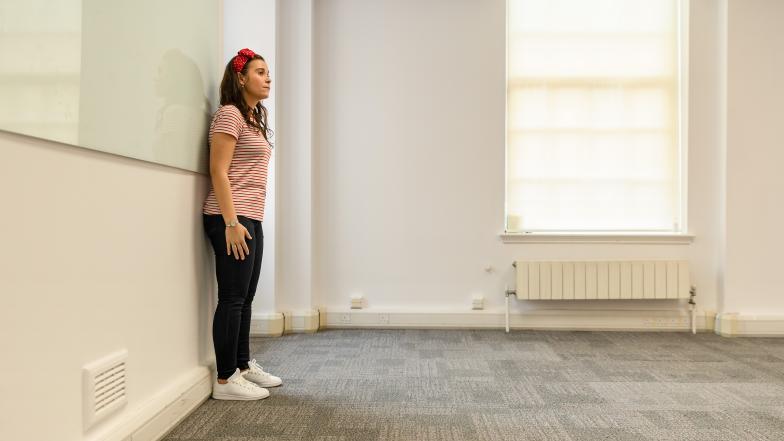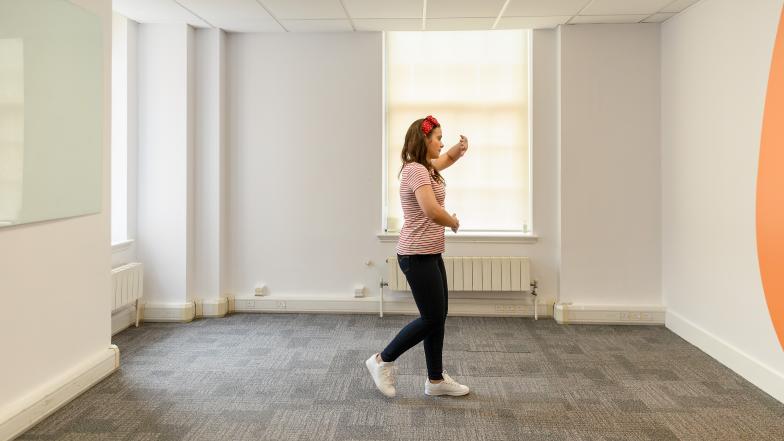Travelling across open spaces
These are useful techniques for walking across large and small open spaces.
Watch this video to learn about travelling across open spaces with one of our Vision Rehabilitation Specialists
Squaring off
This technique is useful when you want to walk across a large open space. ‘Squaring off’ is when you position or align your body with a specific object in the space, and then use that starting point to walk forwards in a straight line.
The following checklist is a guide to using this technique.
- Place your back against a solid surface making sure your heels, bottom, back and shoulders are all placed against the surface. Avoid squaring off against a door, as this may be opened whilst you are against it.
- Ideally, use either upper or lower body protection while you walk across the open space.
- At times you may need to align the side of your body or the back of your legs with an object before walking across the open space.
Taking a line
The ‘taking a line’ technique is used when you reach an open space, while trailing, such as a doorway.
The following checklist is a guide to the ‘taking a line’ technique and used in conjunction with trailing.
- When your trailing hand reaches an opening, stop and move your hand back onto the surface you were trailing.
- Gently bring your trailing arm forward and as you walk forward extend the palm of your hand to locate the opposite surface.


